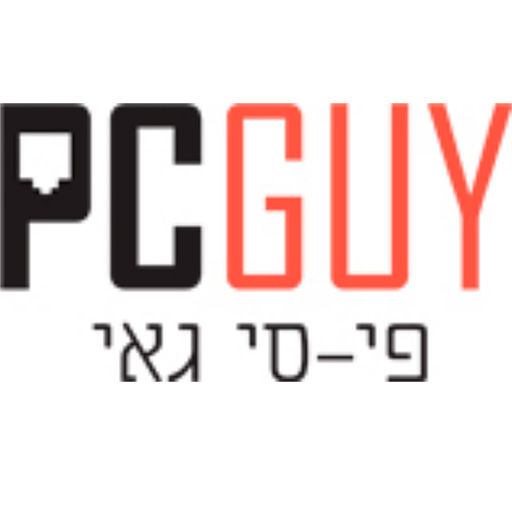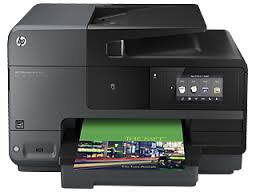When deciding on a new or replacement printer for your home you will have to choose from the following options:
- InkJet or Laser
- Black and White only or Color
- Printer only or optional Copier / Scanner / Fax
- USB ONLY / Networkable (wired or wireless or both)
- Other Options
- Who will install it?
Inkjet or Laser?
- Inkjet Printers
- Inkjet printers use a reservoir of liquid ink which is pumped to the print head which deposits tiny drops of ink directly on the paper.
- Printing is done one line at a time with the print heads moving back and forth across the paper. Printing of graphics/pictures is significantly slower than the printing of text.
- Inkjet printers are generally a lower cost option to purchase, however, depending on usage may cost more per page to print as the cost of the ink can be higher per page than laser printers.
- Inkjet printers are for lower volume printing. If you print hundreds of pages a week this is not the option for you.
- However, just because you print rarely this may not be the best choice for you. Ink cartridges, print heads and ink nozzles for these printers can dry out or become clogged if they sit idle and do not print often. This can cause additional expenses.
- Ink Cartridges are generally rated at, at most, a few hundred pages per cartridge.
- Some printers have a single cartridge which contains three colors of ink (which are placed/mixed to present a multitude of available colors on the final output. Should you run out of a single color ink (in such a cartridge) you must replace the entire cartridge, wasting the ink left of the other colors. Some printers contain separate cartridges for each of the colors, thereby allowing you to replace just the color that is empty.
- Inkjet printers are noisy when they operate as the print head is motor driven back and forth until the printing is complete.
- The maximum quality of an Inkjet printer is generally lower than that available on a laser.
- Laser Printers
- Laser printer toner is stored in powdered form in the toner cartridges. It is heated/melted as it is needed. It does not dry out and can sit unused in the printer for long periods of time.
- Laser printers electronically compose the entire page to be printed and transfer that entire page to the paper as the paper passes over the transfer drum (there are slight differences in this process by different manufacturers).
- The initial cost of a laser printer is higher than that of an inkjet printer but generally its cost per page is lower.
- Each laser toner cartridge cost significantly more than an ink jet cartridge, however, they are generally rated at between 1200-2400 pages per cartridge.
- Laser printers are better suited to larger volume printing for two reasons:
- Cost
- Speed of printing
- If you decide on color laser printing (see below regarding color and black only options), there is a significant cost difference. In fact, a color laser can cost twice as much as a black only laser printer.
- Laser Printers can print on a variety of papers (including photo paper, labels, card stock, etc.). Just be sure you tell the printer what kind of paper you are using as it will adjust the heat accordingly for optimum print quality.
- All laser printers require separate toner cartridges for each of the 3 colors if you select a color laser.
Black and white only or color?
- Black and white
- Clearly a cheaper solution.
- If you almost exclusively print plain text (documents, forms, ) than this is the best solution for you)
- Pictures can be printed but they will, obviously, be black (and grey) and white only.
- Color
- On an inkjet printer the cost difference is not significant. In fact you may find it difficult to find a Black only inkjet printer.
- The purchase cost of a color laser printer is generally almost twice the price of a Black only laser printer.
- A full set of cartridges for a color laser (4 cartridges) can be a hefty investment, bust as I noted earlier, the total number of pages that can be printed is five to 10 times that of a set on inkjet cartridges.
printer only or optional copier / scanner / fax?
- Printer Only
- As the name indicates, such a device can print. No other modalities are available
- Copier / Scanner / Fax
- Often referred to as “ALL-IN-ONE” or “FOUR-IN-ONE” (printer/copier/scanner/fax)
- FAX is often an option – therefore if you need faxing – make sure it is an option on the model you select.
- Copier
- Allows your device to act as a copier, making copies either off of the glass or off of the optional document feeder (see below).
- Most models allow you to reduce or enlarge copies from your original
- Scanner
- All devices which included scanning allow you to scan in color or black and white, even if it is black and white printer only.
- There are a variety of file formats that most scanners can save the scan into. At a minimum you should be sure you can save scans as a:
- PDF (Portable Document Format) – The most common method of emailing or sharing documents.
- JPG – The most common format for pictures
- If you have a need to scan a document and then edit the text after words, you want to be sure your device supports OCR (Optical Character Recognition). This will allow you to open, and then edit, your scanned document in Word (or your word processor of choice). Generally speaking the included software will work only with English. If Hebrew is required, you may need additional software.
- Check the specifications of your printer to know what the maximum scanning resolution is. 200-300 DPI (dots per Inch) is sufficient for documents but for photographs you will want at least 1200 DPI or more.
- Fax
- While most newer devices which included faxing allow for color faxing, that technology has not been adopted and is for all intents and purposes not used and therefore not required.
- Remember that to use the fax you must have a landline telephone You cannot use your cell phone for this. If you have a VOIP (internet based) phone, check with your provider if they support faxing.
- The printer (fax portion) will need to be connected to you phone line for this to work.
- If you have only a single phone line and you use voicemail or an answering machine you will not be able to receive faxes unattended. You will need to be home to tell the fax machine to take the call.
- There are options from Bezeq for “distinctive ring” which is like having a separate fax line and you will be able to receive faxes unattended.
USB only / Networkable (wired or wireless)?
There are multiple possible ways to connect your printer to your PC in order to print or scan.
- USB Only
- Almost all home printers today can connect to a PC (or MAC) using a USB (universal Serial Bus) cable. This is the standard.
- This allows for a single PC to be connected to the printer.
- Other PCs that are on the same network as the connected PC can be set to share the printer, however, the primary PC must than always be left on.
- NETWORKABLE
- A printer which is networkable is connected to the home router (wired or wirelessly) depending on the capabilities of the printer.
- Any PC, Mac, Smartphone, or tablet on the home network can then access the printer.
- Depending on the software offered by the manufacturer for that device you may be able to also scan to your portable device.
- This option allows everyone on the home network to share the single printer.
- Wired or Wireless
- You can select a wired only printer if the printer will be within close proximity to the router or if you can run a network cable from the printer to the router (100 Meter maximum)
- You must use a wireless capable printer if the printer will not be able to be connected to the router with a cable.
Other options
There are a number of other optional features to consider:
- Duplexing
- The automatic duplexing option will allow the printer to print on both sides of the paper, automatically.
- This can be turned on or off as required
- Saves paper.
- Document Feeder
- A document feeder allows for the faxing, copying or scanning of multipage documents without the need for opening the printer and placing the next original on the glass after each page.
- USB Port
- Some devices offer a USB port so you can plug in a DISK-ON-KEY with pictures and print directly – with no PC required.
Who will install it?
You can install the printer yourself or let the PCGUY do it for you.
- DIY – Do it Yourself Installation
- The printer will come with detailed instructions for setting up the printer, installing the ink or toner and connecting to your PC and/or network and installing the software on your PC.
- If you are comfortable with the terminology and the choices you will have to make this maybe the choice for you.
- PCGUY installation
- I can usually install a printer, all of the necessary networking and software and assist you in making any of the installation decisions in the first hour of service, keeping your costs to a minimum.
- I can also purchase the printer for you and deliver it (within Jerusalem only) for a small fee.

